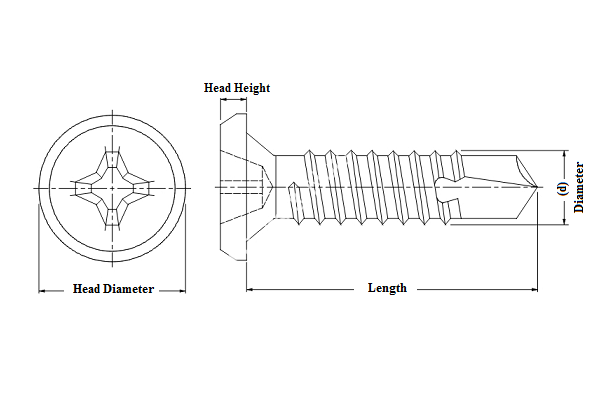Understanding the Importance of Drywall Screw Head Sizes for Your Projects
Understanding Drywall Screw Head Sizes A Comprehensive Guide
When it comes to hanging drywall, choosing the right screws is crucial for achieving a sturdy and long-lasting installation. One of the key factors to consider is the size of the screw head. This article will explore the various drywall screw head sizes available, their specific uses, and how they can impact your drywall project.
What Are Drywall Screws?
Drywall screws are specialized fasteners designed specifically for attaching drywall to wood or metal studs. These screws have a sharp, self-drilling point that makes them easy to install, particularly in construction projects where time efficiency is essential. Drywall screws generally come in three head styles bugle, flat, and pan, with bugle head screws being the most commonly used for drywall.
Types of Screw Heads
1. Bugle Head Screws These screws feature a head that gradually slopes from the top to the neck, allowing for a smooth finish when the screw is driven into the drywall. The bugle head is designed to prevent tearing of the drywall paper and to create a flush finish, making it the preferred choice for most drywall applications.
2. Flat Head Screws Flat head screws are designed with a flat top that sits level with the surface of the material once installed. While not as commonly used as bugle head screws, they can still serve specific functions, particularly in situations where the screw needs to be countersunk.
3. Pan Head Screws Pan head screws have a rounded top, providing a larger bearing surface and a more finished appearance. They are less common in drywall applications but may be used in specialized circumstances or in areas where appearance is a priority.
Choosing the Right Size
drywall screw head size

When selecting drywall screws, the head size is just one of the factors to consider. The length and diameter of the screw also play crucial roles. However, the head size can affect how the screw sits against the drywall surface and how well it can be covered with joint compound.
- Head Diameter The diameter of the screw head can influence how well it bites into the drywall material. A larger head diameter provides more surface area for the screw to grip, preventing it from pulling through the drywall.
- Length Typically, drywall screws range from 1 inch to 3 inches in length. The length you choose will depend on the thickness of your drywall and the framing materials.
Impact on Your Project
The right screw head size can make a significant difference in the outcome of your drywall project. Using a bugle head screw, for example, can provide a seamless finish that is less visible after taping and mudding. On the other hand, using a flat head screw might require additional work to ensure a flush finish, as countersinking is often needed.
Moreover, choosing the right head size can also reduce the likelihood of issues like pop-ups, where screws pull out of the wall over time. A properly seated screw head minimizes this risk, resulting in a more durable installation.
Conclusion
Understanding drywall screw head sizes is an essential aspect of completing a successful drywall project. By familiarizing yourself with the different head styles and their benefits, you can ensure you select the right fasteners for your needs. Whether you are a DIY enthusiast or a professional contractor, the right choice of drywall screws can save you time and effort in the long run, ensuring a smooth and aesthetically pleasing finish for your walls. Always remember, the smallest details can make the biggest difference in construction.
-
Top Choices for Plasterboard FixingNewsDec.26,2024
-
The Versatility of Specialty WashersNewsDec.26,2024
-
Secure Your ProjectsNewsDec.26,2024
-
Essential Screws for Chipboard Flooring ProjectsNewsDec.26,2024
-
Choosing the Right Drywall ScrewsNewsDec.26,2024
-
Black Phosphate Screws for Superior PerformanceNewsDec.26,2024
-
The Versatile Choice of Nylon Flat Washers for Your NeedsNewsDec.18,2024










